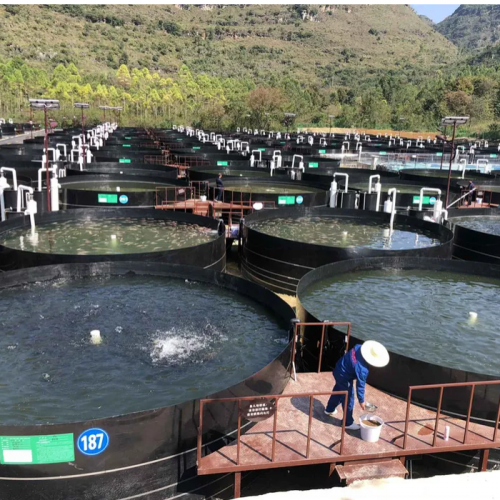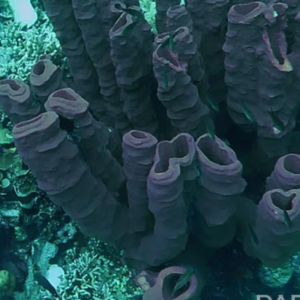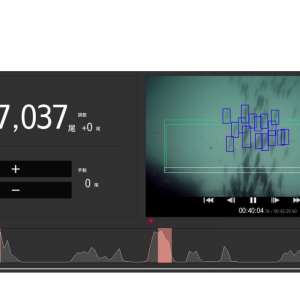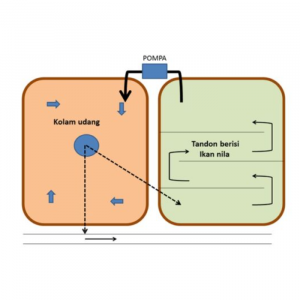
Bringing RAS to the People
| Wed, 29 Sep 2021 - 11:12
This article on “Bringing RAS to the people” first appeared on The Fish Site
According to Jeff Cheng, recirculating aquaculture systems (RAS) don’t need to be used for high value species or purely by large corporations, but are well within the grasp of relatively small aquaculture players, producing a wide range of species.
For Cheng, who's been CEO of Nocera since 2018, RAS doesn’t have to be either complicated or expensive, and he envisions a day when every family can have their own RAS tank to provide them with fresh fish.
Can you briefly describe your aquaculture career?
I was an accountant for 20 years, but my aquaculture career started on 23 August 2018 when a typhoon wiped out all the fish farms in the southern parts of Taiwan. The TV news station started broadcasting what China is doing for high-tech aquaculture farms and it took me two days to find the contact person in the news.
Read more: Power Move: Japanese Energy Firm Getting in on RAS Shrimp
A week later, I met with the person at a coffee shop near Guangzhou airport. My question to him was “Do want to go public or IPO?” The response was “Mr Cheng, please come to Guizhou”. And a week later, when I showed up in Guizhou, my observation was “this is amazing” - I saw 308 RAS tanks being built in a fifth-tier city in China. I took Nocera public through reverse merger on 31 December 2018.
What makes Nocera’s RAS design unique?
Our system is different, mainly because it’s simple. We knew that simplicity is key after we spent months working with Taiwanese fish farmers. We are the most cost-effective system on the market. We have patented technology on recirculation, but this is not super technology it is just who can be more efficient. How many fish can you put into the same size tank and still have them survive? Our systems are equipped with different parts for different species and sizes of fish and can be upgraded. For example, we have oxygen generators for each of our tanks. In addition, for hatchery and eel purposes, we put underwater robots in to clean up each tank.
What’s the expected shelf life of the system?
Our system expected to last minimum 5 years, similar to a car, but we have wear and tear such as water pumps and other parts that they were only built to last one or two years.
What are the advantages of using RAS compared to traditional pond farming?
RAS recycles 90 percent of the water and reduces the area of land required for the fish farm. We can harvest up to 72 times the production using the same hectares of land.
Read more: A successful Case of Split Pond Recirculation Aquaculture System (SP-RAS) for Snakehead Fish Farming in Andhra Pradesh of India
What advice would you give to farmers to ensure they optimise performance of their RAS?
The water and fish are the keys to ensuring that you have a healthy fish farm. For the higher priced species, the farmers should consider indoor fish farms, mainly because these are less affected by the weather and pollution and there are fewer animal interactions, so less predation and better biosecurity.
What project are you most proud of to date?
We built the biggest land-based RAS fish farm in Guizhou, China and we set a standard for everyone to follow.
Do you think RAS can be justified for producing market-sized low value species too?
That is what we are proud of right now. We are different. We focus on small stakeholders. We built cheaper RAS designs, yielding optimal production rates. These low value species are no longer cheap, because of Covid-19 created a food crisis and a freight crisis.
Our systems have been tested with various species and they are simple. While they might not require much technical knowledge to operate, but it does not mean that they don't use high tech or AI. RAS is fish farming for dummies but we can control everything with Wi-Fi using a smart phone and we have camera or CCTV setup with cloud access, so that everyone with permission can see your fish farm.
Read more: Feeding Systems for Fish Farms and RAS
Have you undertaken any projects outside of Asia yet and would you consider moving into salmon?
We are planning for projects in the United States and Brazil. We could have a test run of salmon but it is not my focus. Mainly because the majority of the population worldwide does not consume salmon, but see species like tilapia, catfish, bass and perch as household fish. Our technology may not be as advanced as some of the RAS used by salmon producers and we do not have the big budgets to spend. However, giving our simplistic and cheaper technology, our target is to raise more freshwater fish than salmon.
Can you briefly explain the concept of hybrid RAS/pond farming, by which a RAS tank is attached to a pond?
This idea came to my mind when I was presented with an opportunity with existing US fish farms. I did a lot of research on US fish farming history. I observed that so much of US technology focuses on building iPhones or fighter jets, but the US aquaculture business was left behind. Most of the fish farms were built back into the 1960s. And, to be honest, the US aquaculture industry does not have the most advanced technology and it’s not efficient.
The fish farming equipment suppliers have been winding down and that makes equipment such as aerators and fish feeding trucks so expensive compared to Asia. We’re looking at hundreds and thousands of acres of traditional fish ponds and I wondered how I could change this. There's no way for me to fill it up the pond and build the RAS on top of it. It would cost me hundreds of millions just to do that.
By adding our individual tanks to each pond, I can not only increase the production but also provide recirculation of water to the pond. We are targeting a minimum of a 100 percent increase in production by adding our systems. And that will free up the pond space for other species such as trout, crawfish, or even sturgeon.
Read more: Feed and Faeces: The Challenges of RAS Production
Where would you like the company to be in 10 years’ time?
We want to make the RAS systems affordable, with easy installation, so that everyone or every family can have their own fish farm in their backyard. This was requested by many friends and family in the United States because they were locked down due to Covid-19 and they wanted to have fresh fish. The question was “Can you build a system which I can farm my own fish at home?”. We did that when we first introduced our family version or one on one systems to Taiwanese farmer.
Last, I told my daughter that I am fat and maybe I am a king fish, but I want to be a fish king of freshwater fish.
---
Penulis: Rob Fletcher (Senior Editor The Fish Site)























